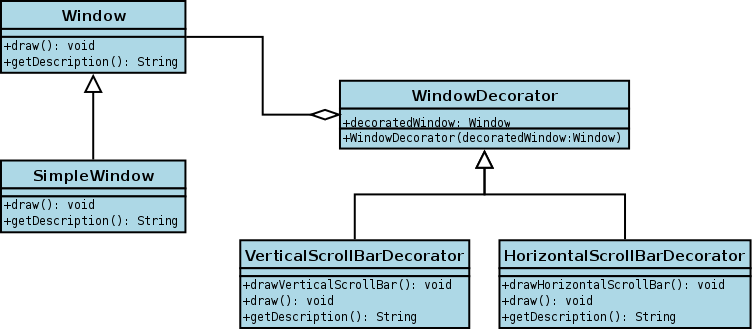
As an example, consider a window in a windowing system. To allow scrolling of the window's contents, we may wish to add horizontal or vertical scrollbars to it, as appropriate. Assume windows are represented by instances of the Window class, and assume this class has no functionality for adding scrollbars. We could create a subclass ScrollingWindow that provides them, or we could create a ScrollingWindowDecorator that adds this functionality to existing Window objects. At this point, either solution would be fine.
Now let's assume we also wish the option to add borders to our windows. Again, our original Window class has no support. The ScrollingWindow subclass now poses a problem, because it has effectively created a new kind of window. If we wish to add border support to all windows, we must create subclasses WindowWithBorder and ScrollingWindowWithBorder. Obviously, this problem gets worse with every new feature to be added. For the decorator solution, we simply create a new BorderedWindowDecorator—at runtime, we can decorate existing windows with the ScrollingWindowDecorator or the BorderedWindowDecorator or both, as we see fit.
Another good example of where a decorator can be desired is when there is a need to restrict access to an object's properties or methods according to some set of rules or perhaps several parallel sets of rules (different user credentials, etc.) In this case instead of implementing the access control in the original object it is left unchanged and unaware of any restrictions on its use, and it is wrapped in an access control decorator object, which can then serve only the permitted subset of the original object's interface.






















 605
605

 被折叠的 条评论
为什么被折叠?
被折叠的 条评论
为什么被折叠?








